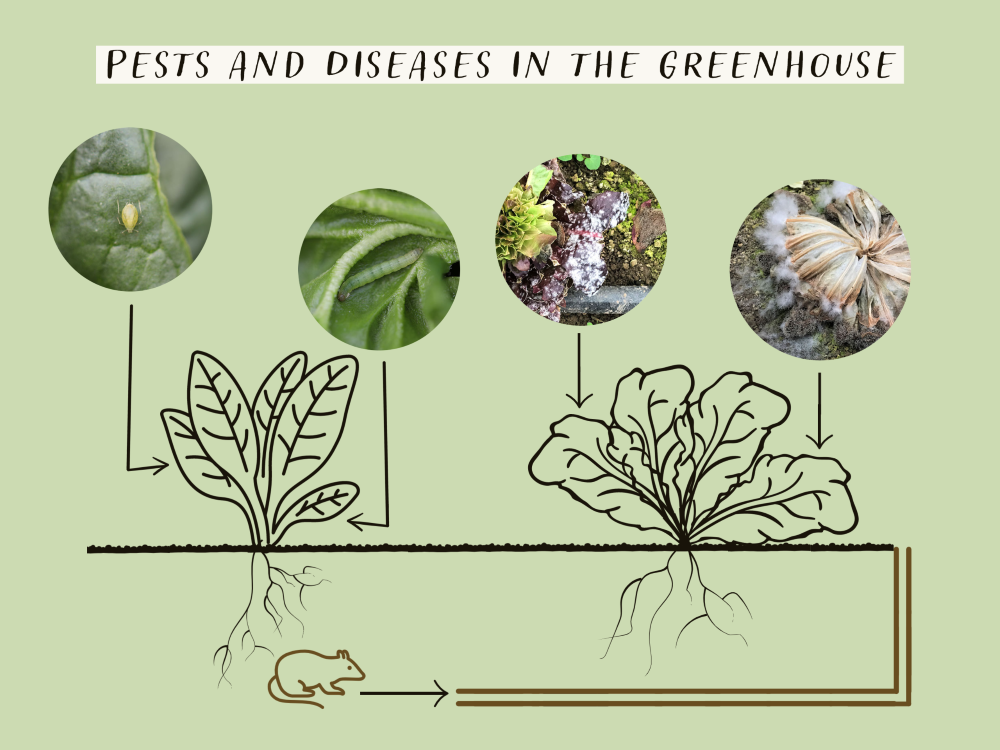
When thinking of winter, white landscapes, a slower pace, and hibernation may come to mind. Although to date we’ve had warmer temperatures than expected, there is an overall calmness this time of year compared to the spring and summer months. That said, production is year-round at the Farm Hub and with crop production come uninvited guests.
We have four greenhouses at the Farm Hub, two of them are heated throughout the winter. One has salad greens, and the other has spinach, kale, collards, Swiss chard, and salad greens. Our two unheated greenhouses both have spinach. At first sight, it is uneventful besides the sounds of the heat circulating and the water running through the drip irrigation. But when walking along each section of greens and looking closely, we can see different organisms hiding among the crops.
Diseases
Winter does not imply disease-free crops. Botrytis (Botrytis cinerea) is a common fungus that produces spores which are dispersed by wind. It does well in high humidity conditions and can quickly damage large sections of winter greens. Botrytis can form sclerotia, which are hardened fungal mycelium with resources to survive long periods of time in the soil until favorable conditions arise to infect crop plants. Unfortunately, a few sections of lettuce at the Farm Hub were destroyed by Botrytis. The infection begins as a wet rot on older leaves and then spreads to the crown area which turns into a brown-gray color. After wilting and collapsing, the plant often forms fuzz on the edge of the wilted leaves, a characteristic of this disease.
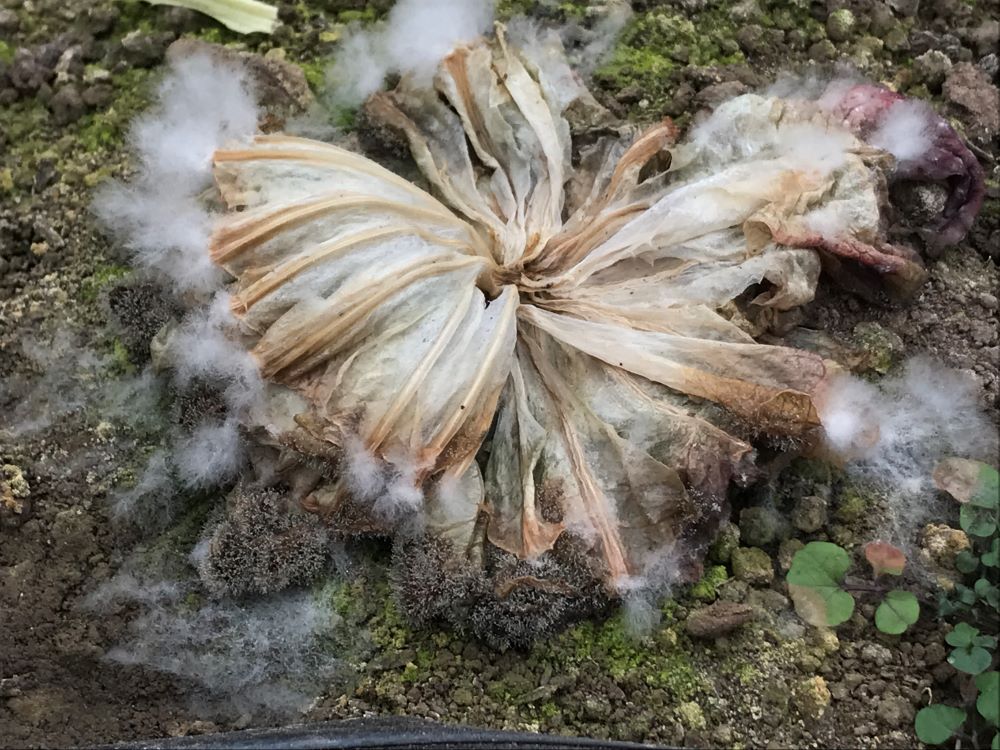
Powdery Mildew, as the name suggest, forms white powdery spots that cover the surface of leaves over time. Like botrytis, powdery mildew spores are dispersed by wind. However, it can spread even if conditions are dry. In the greenhouse with the salad greens, there were sections of lettuce with powdery mildew. The outer leaves had most of the powdery spots with smaller spots forming on the inner leaves.
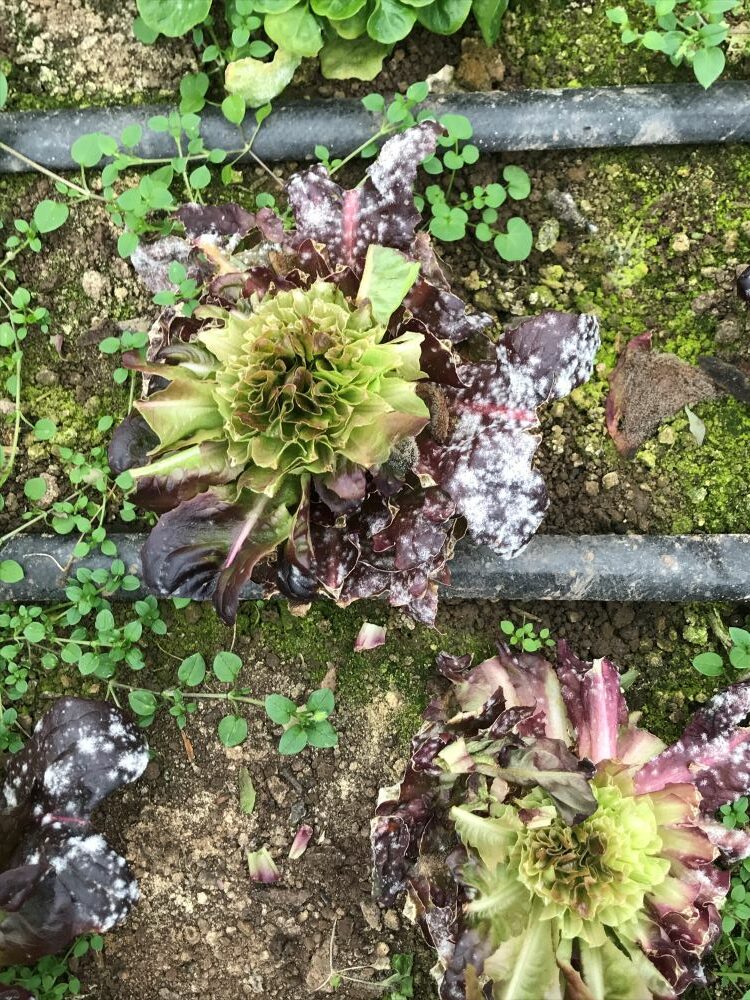
Pests
Surprisingly, aphids are still around, even in the unheated greenhouses. However, their numbers have not gotten as high as they often do in the summer when groups of aphids are found covering multiple leaves. While most aphids overwinter as eggs, the aphids that do overwinter as adults can still damage the winter greens by sucking sap from the leaves and transmitting plant viruses. The Green Peach (Myzus persicae) aphid is common at the Farm Hub and present year-round.

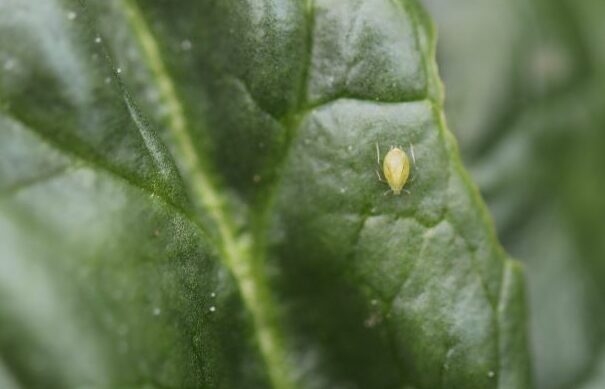
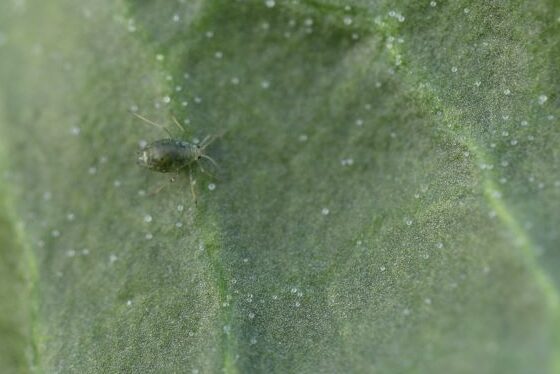
Some caterpillars overwinter in soils as pupae while others may hang out on crops through the season. Leaves with small holes usually indicate damage from caterpillars. As I walked through the spinach rows and saw a patch of leaves with holes, I knew caterpillars would be nearby. When checking under the leaves, I was surprised to see three caterpillars on one spinach plant. All were relatively small, early instars, most likely due to the slower developmental time in cooler temperatures. These caterpillars were slowly chewing away at the underside of the spinach leaves.
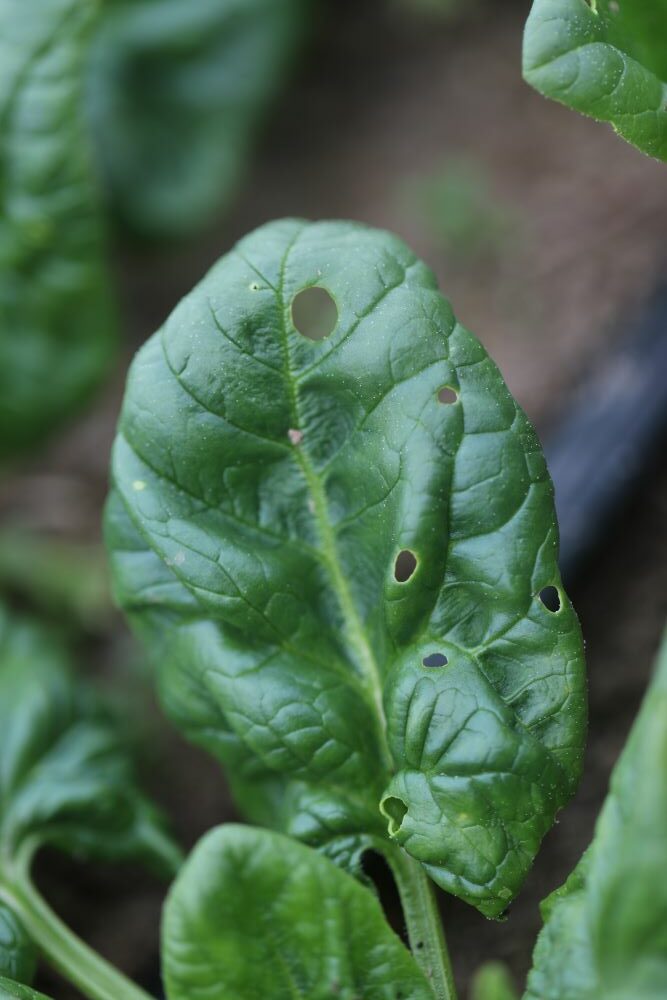
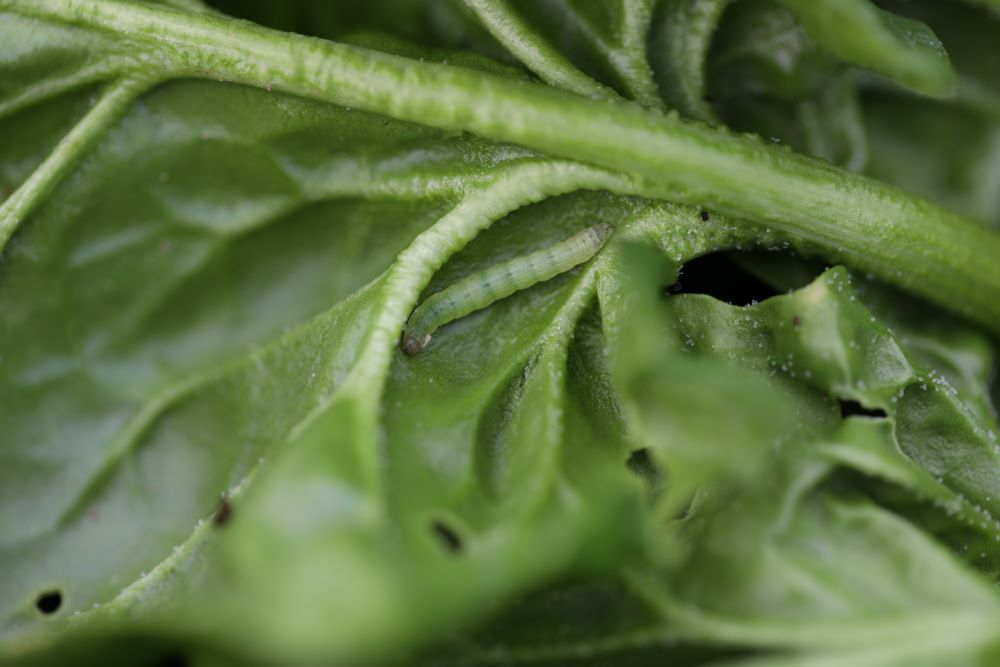
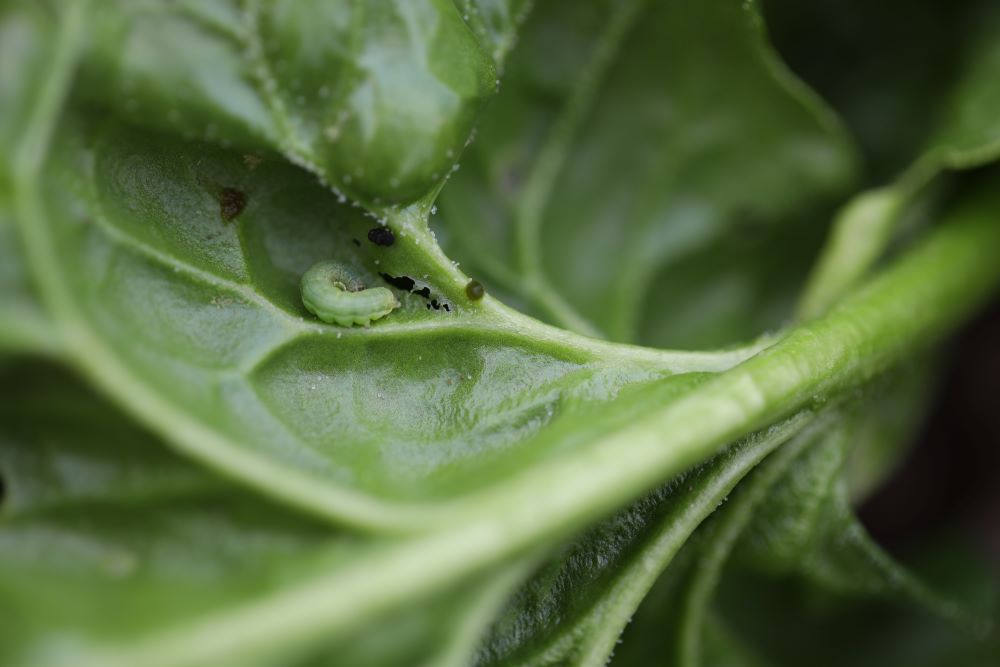
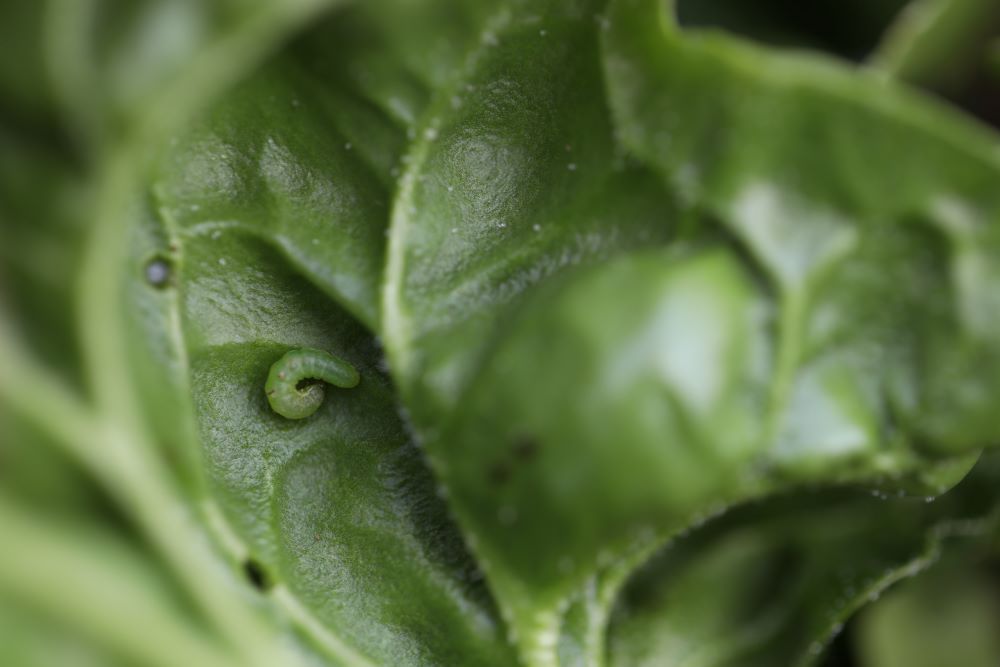
The temperatures in the heated greenhouses hover between 70 and 80°F during the day. Rodents find their way into the warm greenhouses every year by digging tunnels under the walls or through small crevices along the greenhouse perimeter. The main concern with rodents, especially voles and mice, is tunneling and eating crop roots.
In one of our greenhouses, we have Eliot Coleman style traps to limit the damage from rodents. These are wooden boxes that open from the top and have one small opening for rodents to go in through. There is a snap trap without bait on the other side of the small opening. Since rodents love dark warm places, there is no need for bait. Boxes are placed near a visible tunnel opening or at the edge of a greenhouse. At the Farm Hub, we have chosen to use Eliot Coleman style traps because there is no need for bait, and they are a better alternative to other management methods such as rodenticides. The chemicals in rodenticides stay in the animal that ingests it and can negatively impact predators or scavengers that capture the rodents. Being mindful of unintended effects to wildlife is important to keep in mind when choosing pest management methods.
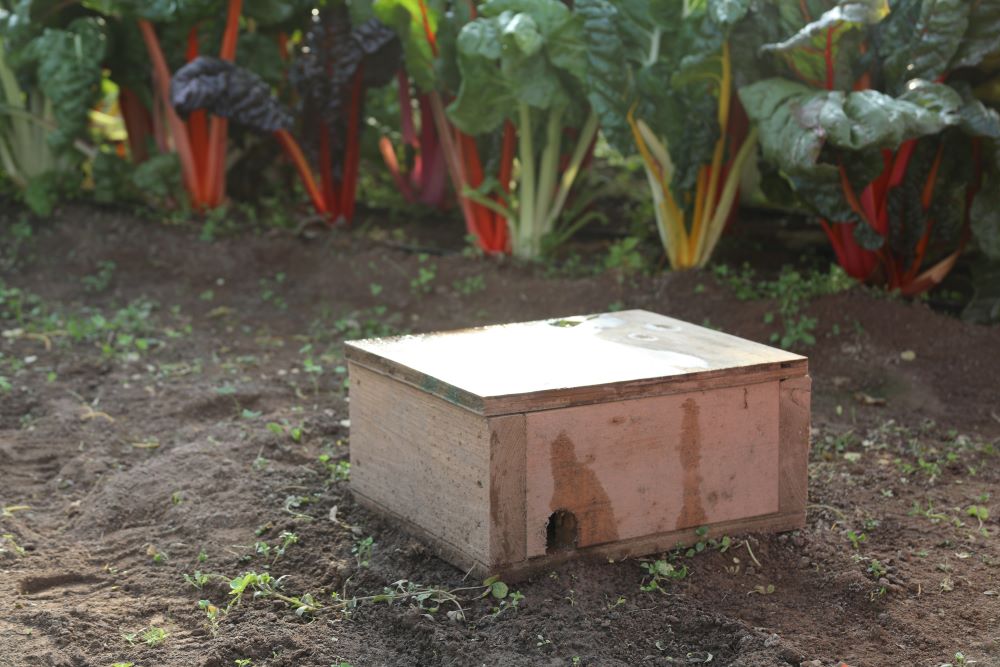
Pests, diseases, and wildlife do not take a break during the winter. The occasional rodent will find its way into the warm greenhouse and disease will damage some crops throughout the winter. Some organisms may take things slower, like the caterpillar with a slower developmental time, or the lone aphid that sucks the sap from the leaf it’s on. When stepping into the greenhouses, it helps to keep a close eye all around because many organisms could be hiding among the vibrant winter greens.

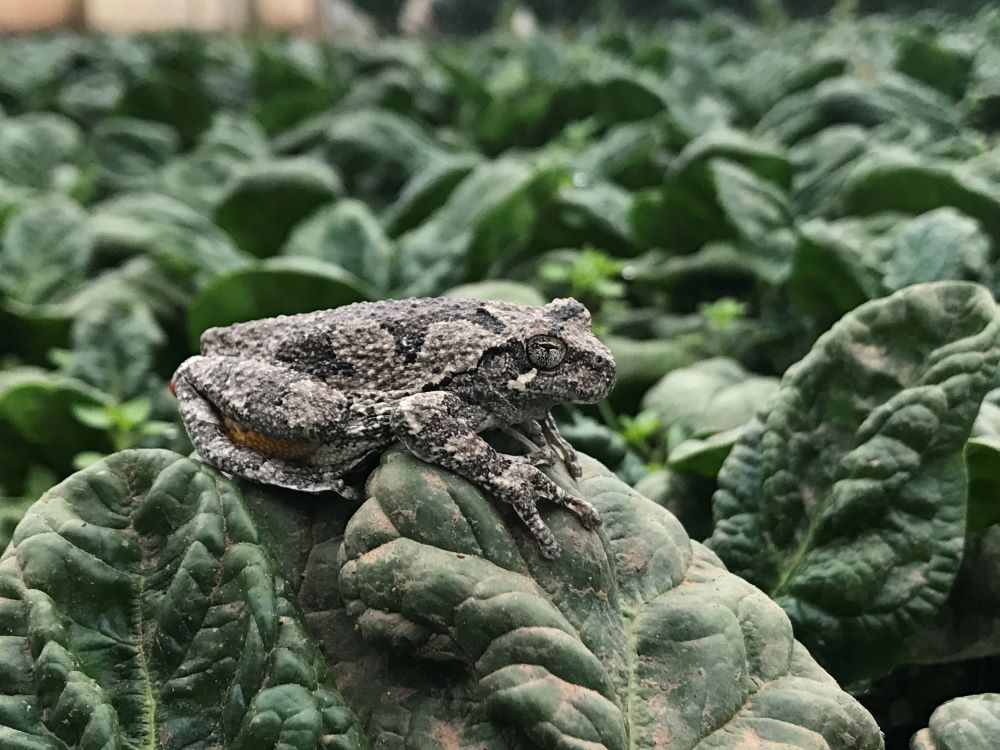
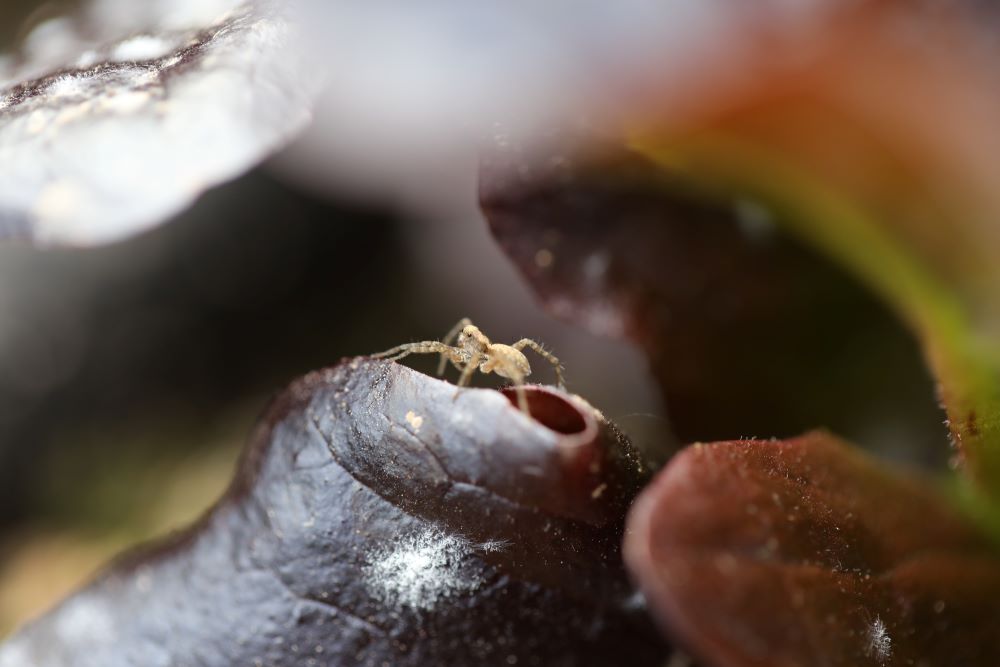
Thank you to Jeff Arnold, the Farm Hub’s Farm Manager, for offering insight on the diseases, traps, and activities in the greenhouses.
References:
Diseases Occurring in Winter Greens and their Management | Cornell Vegetables
